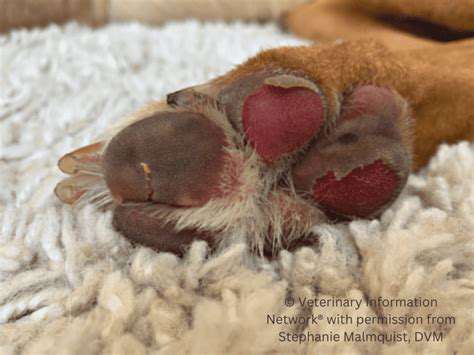How to protect your dog’s paws on hot pavements
Young dogs and certain breeds with sensitive paws (like Greyhounds or small terriers) face greater risks due to their physiology. Their paw pads haven't fully developed the protective keratin layers found in adult dogs, making them more vulnerable to thermal injuries.
The Painful Reality of Paw Burns
First contact with scorching pavement triggers a canine's instinctive pain response - you'll often see rapid paw lifting or frantic attempts to find shade. These burns progress through distinct stages:
- Initial redness and tenderness (comparable to human sunburn)
- Formation of painful blisters (second-degree burns)
- In severe cases, tissue necrosis requiring veterinary intervention
The healing timeline varies dramatically based on multiple factors. A minor burn might resolve in 3-5 days with proper care, while severe cases can take weeks of bandage changes and restricted activity. Secondary infections pose additional risks if damaged skin isn't properly treated.
Lifelong Consequences of Thermal Injuries
Repeated pavement burns can lead to permanent paw pad changes that many owners don't anticipate. The protective outer layer may thicken abnormally (hyperkeratosis), reducing shock absorption during walking. Some dogs develop chronic sensitivity, making winter walks equally painful when salt or ice-melting chemicals are present.
Veterinary dermatologists report cases where thermal damage altered sweat gland function in paws, compromising a dog's natural cooling system. This creates a vicious cycle where affected animals become more prone to overheating during normal activities.
Practical Prevention Strategies
Smart timing makes all the difference. Schedule walks during early morning hours (before 8 AM) or late evening (after 7 PM) when surfaces have cooled. Test pavement temperature by placing your bare hand firmly on the surface for 7 seconds - if it's uncomfortable for you, it's dangerous for paws.
Urban dog owners should seek out:
- Grassy park pathways
- Shaded bike trails with crushed gravel
- Rubberized tracks at local schools
Special Considerations for At-Risk Dogs
Senior dogs with arthritis or diabetic pets require extra vigilance. Their reduced pain sensitivity means they may continue walking on damaged paws, worsening injuries. Consider investing in a lightweight pet stroller for midday vet appointments or necessary outings when pavement temperatures peak.
Service dog handlers face unique challenges, as their working partners must navigate various surfaces. Specialized paw wax (like Musher's Secret) can provide temporary protection during essential tasks.
Recognizing Paw Trauma in Its Early Stages

Subtle Behavioral Red Flags
Dogs communicate pain differently than humans. Instead of obvious limping, you might notice:
- Excessive panting during walks (not proportional to exercise intensity)
- Uncharacteristic reluctance to climb stairs or jump on furniture
- Newfound preference for cool tile floors over carpets
Physical Examination Techniques
Conduct weekly paw inspections using this veterinarian-approved method:
- Gently spread each toe to examine interdigital areas
- Check for foreign material (like tiny pebbles or burrs) along paw margins
- Note any unusual odor, which could indicate infection
Emergency Situations Requiring Vet Care
Certain symptoms demand professional evaluation:
- Visible layers of peeling skin
- Bleeding that doesn't stop within 5 minutes of gentle pressure
- Pus or abnormal discharge
- Sudden swelling affecting multiple paws
Home Care for Minor Injuries
For superficial abrasions:
- Rinse with cool saline solution (1 tsp salt per cup of water)
- Apply thin layer of veterinary-approved antibiotic ointment
- Use breathable socks (changed every 4-6 hours) to prevent licking
Innovative Paw Protection Solutions
Cutting-Edge Materials
Modern paw wear incorporates space-age technologies:
- Aerogel-insulated soles for extreme heat protection
- Self-cooling hydrogel liners that activate at high temperatures
- Reflective coatings for nighttime visibility
Custom-Fit Options
For dogs with non-standard paw shapes (like Great Danes or Bulldogs), several companies now offer:
- 3D-printed silicone protectors
- Made-to-measure orthopedic designs
- Adjustable strap systems for growing puppies
Training Protocols
Introduce paw gear gradually using positive reinforcement:
- Let dog sniff and investigate gear before wearing
- Start with 5-minute indoor sessions with treats
- Slowly increase duration over 2-3 weeks
Alternative Protection Methods
When boots aren't practical:
- Paw wax reapplied every 1-2 hours
- Cooling gel pads for temporary relief
- Portable shade tents for outdoor events